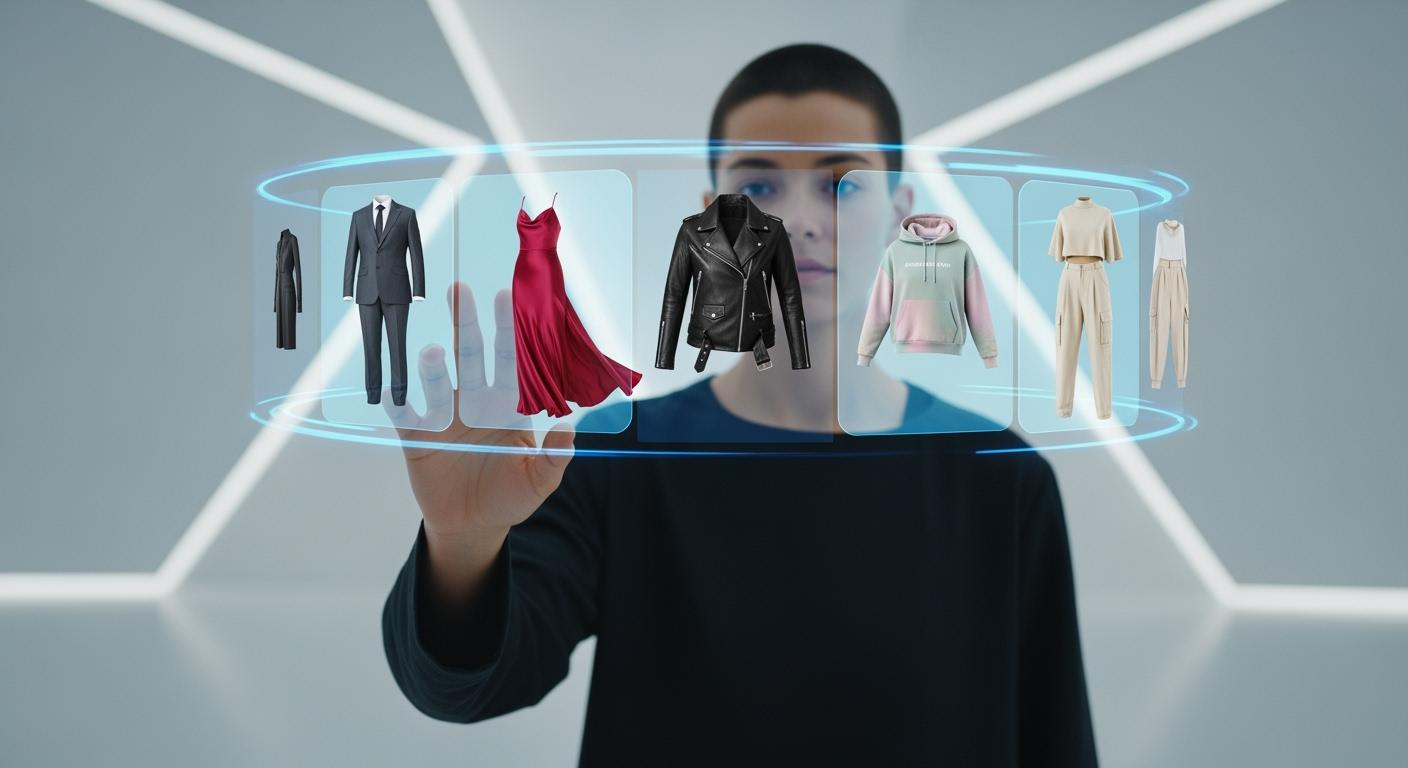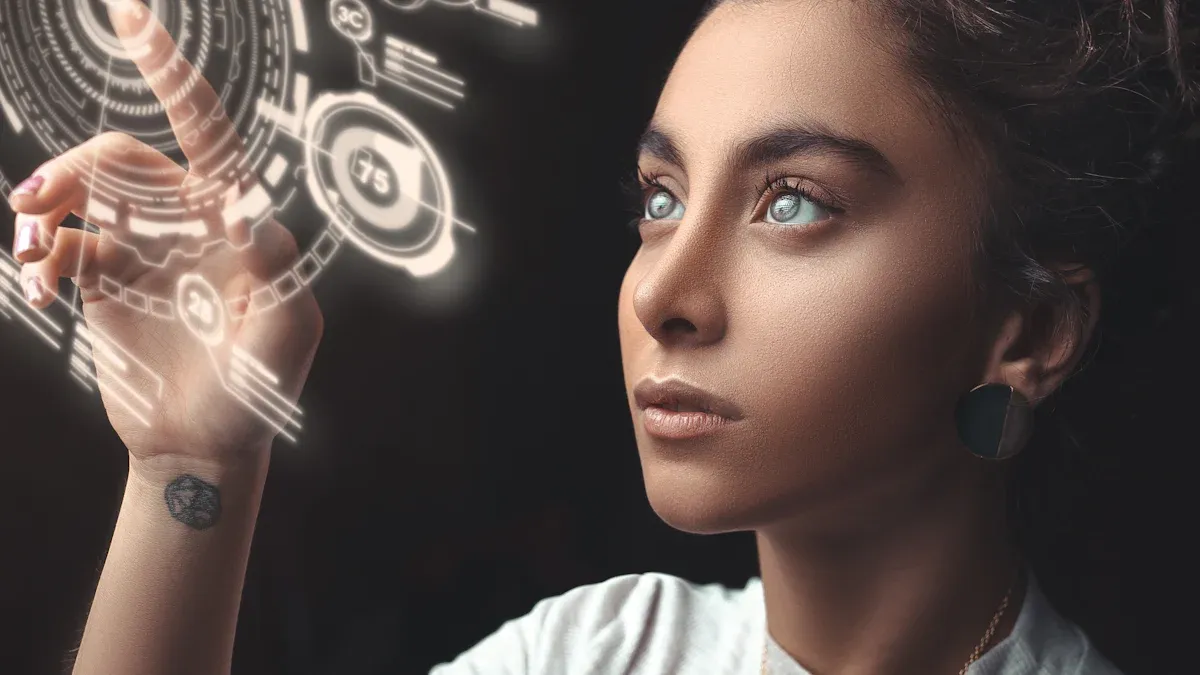
Artificial intelligence (AI) is revolutionizing fashion beyond outdated gender labels. This shift meets a growing demand for inclusive fashion. AI delivers personalized recommendations and personalized style recommendations. It focuses on individual style and fit for true personalization. This AI-powered fashion creates truly inclusive recommendations.
This inclusive process relies on core AI technologies:
- Machine Learning AI understands user behavior.
- Computer Vision AI analyzes style attributes.
- Natural Language Processing AI interprets descriptive searches.
This system provides a great recommendation. These gender-inclusive fashion recommendations are creating a more inclusive fashion world. This is inclusive fashion. This is inclusive fashion. This is inclusive fashion.
How AI powers inclusive fashion

Artificial intelligence provides the engine for a more inclusive fashion industry. The technology moves beyond simple categories. It learns what makes an item unique. AI then matches that item to a person's specific body and style. This creates a truly personal shopping experience. This approach is fundamental to building inclusive fashion.
Learning individual style beyond the binary
AI systems learn individual style by breaking clothes down into their core features. This process is called attribute tagging. Instead of a "men's shirt" label, an AI sees a collection of tags. These tags describe its real-world characteristics. Companies like Ximilar and YesPlz use AI to automatically tag products with details like color, cut, material, and pattern. The AI can even identify the occasion (work, vacation) or "vibe" (romantic, minimal) of a garment. This focus on attributes makes fashion without binaries a reality. It allows for better gender-inclusive fashion recommendations.
How AI Understands Style: Vector embeddings are the next step. These are lists of numbers that represent concepts. AI gives each clothing item and style attribute a numerical vector. Items with similar styles have vectors that are numerically close together.
This technology powers a smarter search. A user can type "a satin dress for summer weddings." The AI converts this phrase into a vector. It then searches for product images and descriptions with similar vectors. This system finds visually and stylistically similar items. It works even if the product description does not contain the exact search words.
AI also analyzes how people combine items in the real world. It identifies items that frequently appear together in stylish outfits. This creates a "knowledge graph" of what clothes are compatible. This allows AI to offer better recommendations. For example, companies like Stylitics and Intelistyle use this data to suggest full outfits based on a user's preferences. This method helps people discover new items that fit their personal aesthetic. It is a key part of making inclusive fashion and transgender fashion accessible. The AI provides a recommendation based on style, not outdated gender rules. This is how AI builds a more inclusive shopping world for transgender clothing.
AI, body measurements, and perfect fit
Style is only one part of inclusive fashion. A perfect fit is just as important for self-expression and confidence. AI-powered body measurement technology delivers this precision. It turns a standard smartphone into a powerful scanning tool. This technology is vital for transgender fashion and anyone who struggles to find the right size. The process is simple and private.
- A user takes a quick front and side photo. Voice instructions guide them for the best angle.
- The AI uses these photos to generate a private 3D model of the user's body.
- In under a minute, the system calculates over 85 precise body measurements.
Computer vision AI analyzes this data to ensure size inclusivity and celebrate body diversity. It uses the measurements to perform several key tasks. The AI can recommend the optimal size for a specific item. It can also create a fit visualization, showing how a garment will drape on the user's unique body shape. This technology is extremely accurate. It helps reduce returns and makes online shopping for transgender clothing much easier. This level of personalization is a huge step forward for inclusive fashion.
This focus on function and fit extends to adaptive clothing and innovative footwear. AI helps designers create virtual previews of garments with features like magnetic closures or adjustable fits. This supports supporting trans-inclusive design by ensuring new features are both functional and stylish. In footwear, AI analyzes foot anatomy and movement patterns to optimize fit and comfort. Generative design algorithms can even create entirely new shoe designs for diverse needs. This AI-powered transgender fashion approach ensures that recommendations are not just about style but also about function, comfort, and fit. The result is a more inclusive and empowering shopping experience for everyone seeking transgender clothing and gender-neutral clothing. The AI makes gender-fluid fashion and inclusive fashion a practical reality. These gender-inclusive fashion recommendations help people find the perfect transgender clothing. The AI makes shopping for transgender fashion and inclusive fashion easier. This technology promotes body diversity and makes shopping for transgender clothing more inclusive.
Overcoming bias for true inclusivity
Building a truly inclusive fashion future requires more than just powerful technology. The AI must learn from fair and diverse data. Companies also need to earn user trust by protecting personal information. Addressing these challenges is key to achieving genuine gender inclusivity.
The challenge of biased training data
An AI is only as good as the data it learns from. Much of the historical data in fashion comes from a world divided into "menswear" and "womenswear." This creates a significant problem. An AI trained on this biased data can accidentally reinforce old stereotypes. This limits its ability to recommend inclusive fashion and transgender fashion options.
To solve this, developers use clever techniques. One method is re-weighting. This process adjusts the importance of training data. It gives more weight to under-represented groups and styles. This helps the AI balance fairness and accuracy, ensuring better representation.
Brands are also taking direct action to improve diversity. For example, Levi's is working with AI specialists to create custom computer-generated models. This effort aims to supplement human models. It allows the brand to showcase clothing on a wider range of body types, ages, and skin tones. This proactive approach directly fights data gaps and pushes the fashion industry toward greater inclusivity and representation for transgender clothing. The AI learns from this improved diversity.
Privacy, control, and user trust
Personalized AI recommendations for fashion often require sensitive data, like body measurements. Gaining user trust is therefore essential. People must feel confident that their information is safe. Without this trust, even the best AI will fail. Inclusive fashion depends on this partnership between the user and the technology.
Fashion tech companies use several methods to protect user data and build a more inclusive system.
- Anonymization: This process removes personal identifiers from data. It helps protect privacy if a data breach occurs.
- Encryption: This technique scrambles information. It makes data unreadable to anyone without the correct key, securing it during transfer.
- Privacy by Design: Companies build privacy features directly into their technology from the start.
These security measures are vital for the success of AI in fashion. They ensure that the push for personalized transgender fashion and inclusive experiences also respects user privacy. This commitment to security helps build the trust needed for a more inclusive and diverse fashion landscape. The AI can then provide helpful recommendations for transgender clothing and transgender fashion. This focus on privacy is a core part of making fashion technology inclusive.
The impact of fashion for all genders

The shift toward inclusive fashion creates powerful benefits for everyone. AI-driven personalization helps consumers express their true selves. It also offers brands a clear path to market growth and customer loyalty. This inclusive fashion revolution is changing the industry for the better.
The consumer benefit: True self-expression
Inclusive fashion empowers consumers by celebrating their unique identities. AI delivers personalized shopping experiences that move beyond old limits. This focus on the individual transforms shopping into an act of self-expression. People looking for transgender clothing or simply a better fit feel seen and valued. This improved representation boosts confidence. The AI provides recommendations that honor personal style and body diversity. This inclusive approach to fashion and transgender fashion helps people trust their own instincts. They can wear what makes them feel fantastic.
This journey toward self-expression has many positive effects:
- It builds a stronger connection to brands that promote diversity.
- It reduces feelings of being left out by the fashion world.
- It promotes a positive body image and a sense of belonging.
- It enhances personal dignity through better representation and inclusive shopping.
Ultimately, this inclusive fashion movement, powered by AI, helps people find the perfect transgender clothing and build confidence through self-expression. The AI makes shopping for transgender fashion and inclusive fashion a validating experience.
The brand benefit: Market growth and loyalty
Brands that embrace fashion for all genders see significant rewards. This is more than a trend; it is a smart business strategy. The gender-fluid clothing market was estimated at $3 billion in 2023. Projections show it growing to $5 billion by 2028. This demonstrates a huge opportunity for growth. AI helps brands tap into this market by offering better gender-inclusive fashion recommendations.
Adopting inclusivity also builds strong customer loyalty. When brands use AI for better sizing and show diversity in their marketing, customers feel respected. This positive representation improves brand image. It also reduces return rates, a major cost in online fashion. Better fit from AI recommendations means more satisfaction. Brands that use AI to serve a wider audience with inclusive fashion, including transgender clothing and transgender fashion, are seen as leaders. They build lasting relationships with a loyal customer base. This commitment to diversity and inclusivity through technology like AI is key to future success in fashion. The AI helps brands provide inclusive recommendations for transgender clothing and transgender fashion.
AI is the key to unlocking a future of truly inclusive fashion. The technology shifts the fashion industry from rigid gender labels to fluid, individual-based personalization. As AI evolves, it will foster a more expressive, accepting, and inclusive fashion landscape. This inclusive AI provides inclusive recommendations, making inclusive fashion a reality. The future of fashion is inclusive, and this inclusive AI offers inclusive recommendations that promote inclusivity and inclusive fashion. This inclusive AI makes fashion more inclusive, and this inclusive fashion is the future of fashion, fashion, fashion, fashion, fashion. This inclusive AI makes inclusive fashion more inclusive.
FAQ
How does AI make fashion more inclusive?
AI creates a more inclusive shopping experience. It analyzes clothing attributes like cut and fabric, not gender labels. This technology helps people find items that match their personal style. This inclusive approach makes fashion accessible to everyone.
Is my data safe when using AI for shopping?
Yes, companies prioritize data safety. They use methods like anonymization and encryption to protect personal information. This secure approach builds trust. It makes the online shopping experience safe and inclusive for all users.
Can AI help me find clothes if I don't fit standard sizes?
Absolutely. AI-powered tools can take your precise body measurements from a smartphone. The system then recommends the best size for you. This makes the shopping process more inclusive and helps you find the perfect fit.
Tip: This technology is a game-changer for inclusive fashion. It ensures your online shopping results are tailored to your unique body, boosting confidence.
Will AI replace human designers?
No, AI is a tool that supports designers. It helps them understand trends and test new ideas quickly. Designers use AI to enhance their creativity. This partnership makes the design process more efficient and inclusive.
See Also
Revolutionizing Fashion with AI: Sustainable Solutions for a Greener Future
Fashion Retail's Future: Leveraging Predictive Models for 2025 Success
Intelligent AI: Optimizing Fashion Returns for Immediate Business Efficiency
Achieving Equilibrium: Predictive Analytics for Fashion Supply and Demand